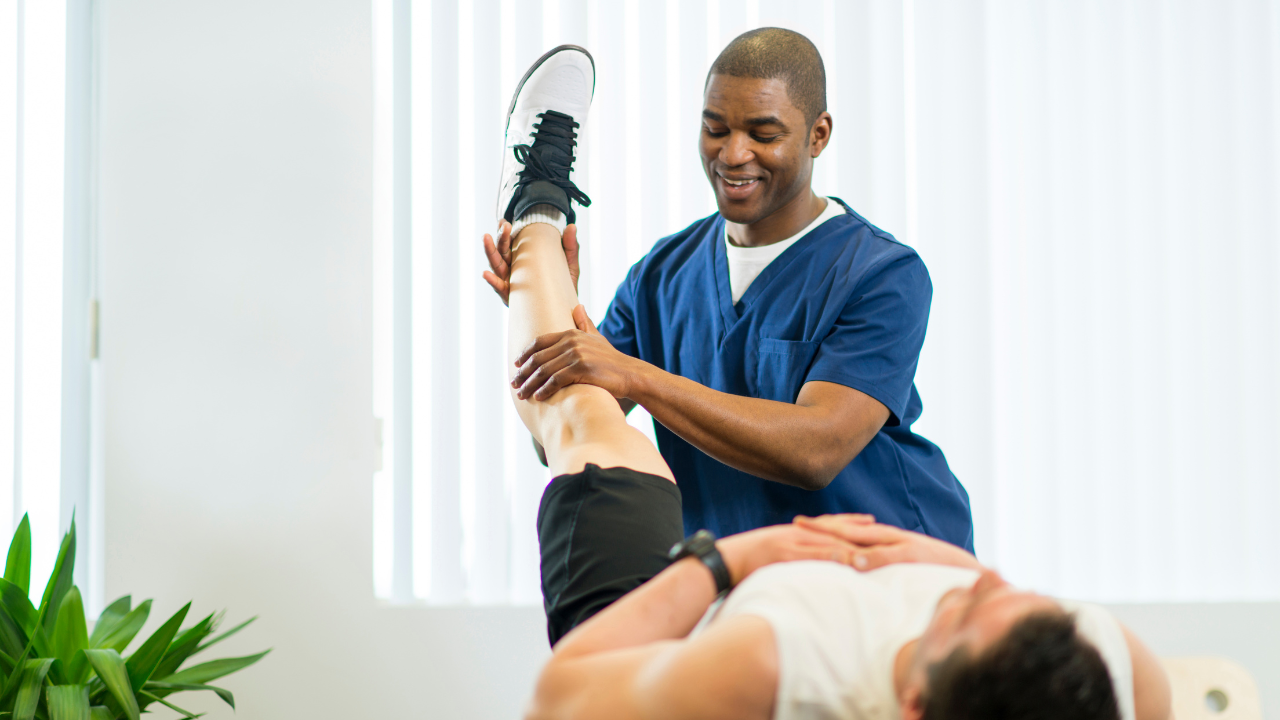
When it comes to managing osteoarthritis (OA), a chronic joint condition that affects millions globally, there are various treatment options available. Two of the most common methods for alleviating pain are physical therapy and medication. Both options aim to manage symptoms, improve mobility, and enhance quality of life. However, as patients navigate their journey with OA, a critical question arises: which treatment is more effective in managing pain and improving function—physical therapy or medication?
This article will explore the unique advantages of physical therapy and medication in the treatment of osteoarthritis, with insights drawn from experts at Thrive Physical Therapy. By understanding how each approach works, patients can make informed decisions about their pain relief strategies.
Understanding Osteoarthritis
Osteoarthritis is a degenerative joint disease that primarily affects the cartilage—the cushioning material between bones in the joints. Over time, the cartilage wears down, leading to pain, stiffness, swelling, and reduced range of motion. OA typically affects weight-bearing joints like the knees, hips, and lower back but can occur in almost any joint in the body.
While the exact cause of osteoarthritis remains unclear, factors such as aging, genetics, obesity, joint injuries, and repetitive stress can all contribute to the development and progression of the condition. The symptoms of OA can range from mild discomfort to severe pain, limiting the ability to perform everyday activities.
The Role of Medication in Osteoarthritis Treatment
Medication is one of the most widely used approaches to manage osteoarthritis pain. While medication does not cure OA, it can provide significant relief by addressing pain and inflammation, allowing patients to better manage their condition.
Nonsteroidal Anti-Inflammatory Drugs (NSAIDs):
NSAIDs, such as ibuprofen and naproxen, are commonly prescribed for OA pain. They work by reducing inflammation, which is often a major contributor to OA symptoms. These drugs can provide short-term relief, especially during flare-ups of pain and swelling. However, long-term use of NSAIDs may carry risks, including gastrointestinal issues, kidney damage, and increased risk of cardiovascular events.
Acetaminophen:
Acetaminophen (Tylenol) is another over-the-counter option commonly used for OA pain. While it doesn’t reduce inflammation, acetaminophen helps relieve pain by blocking pain signals to the brain. It is often recommended for mild to moderate pain, but it should be used cautiously to avoid liver damage when taken in excessive doses.
Corticosteroid Injections:
For more severe cases of osteoarthritis, corticosteroid injections may be recommended to reduce inflammation and provide quick pain relief. These injections deliver a potent anti-inflammatory medication directly into the affected joint, offering temporary relief that can last for weeks or even months. However, repeated use of corticosteroid injections can weaken joint structures over time.
Hyaluronic Acid Injections:
Hyaluronic acid is a naturally occurring substance in the body that lubricates joints. Injections of hyaluronic acid into the affected joint can provide pain relief by improving lubrication, reducing friction, and promoting smoother joint movement. These injections are often used in the knee for osteoarthritis patients who do not respond well to other treatments.
While medications can offer relief, they do not address the underlying cause of osteoarthritis. Moreover, long-term use can lead to side effects, and medications may not be suitable for everyone, especially those with pre-existing health conditions.
The Role of Physical Therapy in Osteoarthritis Treatment
Physical therapy is a non-invasive, holistic treatment approach that focuses on strengthening muscles, improving flexibility, and restoring functional movement in the affected joints. Unlike medication, which often provides only temporary relief, physical therapy targets the root causes of osteoarthritis symptoms by helping patients improve the mechanics of their joints and muscles.
Targeted Exercise Programs:
Physical therapists at Thrive Physical Therapy design individualized exercise programs aimed at strengthening the muscles around the affected joint. Stronger muscles provide better support for the joint, which helps alleviate pain and prevent further joint degradation. These exercises focus on improving joint stability, increasing flexibility, and enhancing range of motion, ultimately reducing strain on the joint.
Manual Therapy:
Manual therapy involves hands-on techniques, such as joint mobilization and soft tissue manipulation, to reduce pain and improve mobility. For patients with OA, manual therapy can be highly effective in restoring normal joint motion and alleviating stiffness. Physical therapists are skilled in using manual techniques to improve circulation and reduce inflammation, providing natural pain relief without relying on medication.
Education and Lifestyle Modifications:
Another key aspect of physical therapy is patient education. Physical therapists take the time to explain how osteoarthritis affects the body and offer strategies to manage daily activities without exacerbating pain. This may involve teaching patients how to adjust their posture, use assistive devices, and avoid movements that place undue stress on the joints. Additionally, physical therapists may recommend weight management strategies, as excess weight can further strain OA-affected joints, particularly the knees and hips.
Aquatic Therapy:
For patients with severe joint pain or those who are unable to perform land-based exercises, aquatic therapy is an excellent option. Water provides buoyancy, reducing the impact on joints while still allowing for effective strength and mobility training. Aquatic therapy is particularly beneficial for those with knee or hip osteoarthritis, as it allows for pain-free movement in a supportive environment.
Long-Term Benefits of Physical Therapy:
One of the key advantages of physical therapy over medication is its long-term benefits. While medication provides only temporary relief, physical therapy can help improve joint function and reduce the need for pain medication over time. By strengthening the muscles around the joint and improving mobility, physical therapy can help patients regain independence and enhance their overall quality of life.

When to Choose Physical Therapy vs. Medication
Both physical therapy and medication can play important roles in the treatment of osteoarthritis, but the best approach depends on the individual patient’s condition, symptoms, and goals.
Physical Therapy is Ideal For:
- Patients who want a long-term solution to their pain and are willing to commit to regular exercise and rehabilitation.
- Those looking to improve joint function, strength, and mobility while reducing reliance on medication.
- Patients who have mild to moderate osteoarthritis and are not yet experiencing significant joint damage.
- Individuals seeking a non-invasive, natural way to manage their symptoms without the risks associated with long-term medication use.
Medication is Ideal For:
- Patients with severe pain or inflammation that interferes with daily activities and requires immediate relief.
- Individuals who are unable to engage in physical therapy due to mobility issues or other health concerns.
- Those who need short-term pain relief during flare-ups or exacerbations of osteoarthritis symptoms.
- Patients who prefer a more straightforward, less physically demanding approach to managing their condition.
In many cases, a combination of both physical therapy and medication may be the most effective strategy. Physical therapy can address the underlying causes of joint pain and dysfunction, while medication can provide relief during flare-ups or when physical therapy alone is insufficient.
Suggested Reading: Osteoarthritis Therapy: How Physical Therapy Can Manage Your Symptoms
Conclusion
When managing osteoarthritis, there is no one-size-fits-all approach. The decision between physical therapy and medication depends on several factors, including the severity of the condition, the patient’s preferences, and their overall health.
Physical therapy offers long-term benefits by improving joint function, strength, and mobility, while medication provides temporary relief from pain and inflammation. For patients looking to reduce their reliance on medication and improve their quality of life in the long run, physical therapy may be the better choice.
At Thrive Physical Therapy, professionals are dedicated to providing personalized care that addresses the unique needs of each patient. Whether you’re looking to reduce pain, improve mobility, or regain your independence, Thrive Physical Therapy can guide you toward a solution that works for you.
For more information or to schedule an appointment, visit Thrive Physical Therapy.

